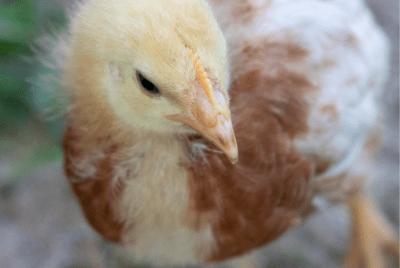Bantam Chickens
Introduction
Brief overview of bantam chickens
Bantam chickens are a delightful variety of miniature chickens, known for their charming size and diverse breeds. Originating from Southeast Asia, these birds are significantly smaller than standard chicken breeds, often weighing one-fourth to one-fifth as much. Bantams come in many forms, including ‘true bantams’ with no larger counterparts and miniaturized versions of larger breeds. Their varied plumage, which ranges from silky to frizzled, along with a spectrum of color patterns, makes them particularly attractive. Ideal for small spaces, they require less food and area, making them a practical and enchanting choice for poultry enthusiasts and backyard farmers alike.
My personal enthusiasm for raising them

Raising bantam chickens has become a joyful journey for me, filled with endless fascination and a deep sense of fulfillment. These miniature chickens, with their diverse and vibrant personalities, bring a unique charm to my backyard. Their diminutive size makes them ideal for my small garden space, allowing me to indulge in my poultry-keeping passion without needing extensive land. Each breed, from the fluffy Silkies to the elegant Sebrights, offers a distinct beauty and character. Caring for them, observing their social behaviors, and even their egg-laying, provides daily delight. Bantams have not just been pets; they’ve become a captivating hobby, enriching my life with their presence.
2. What are Bantam Chickens?
Definition and origin
Bantam chickens, known for their petite stature, are a diverse group of miniature poultry. They originated in Southeast Asia, where their small size was naturally selected due to the region’s dense living conditions. The term “bantam” is derived from the Indonesian port city of Bantam, once a central trading post where these diminutive birds were likely first encountered by European sailors. Historically, bantams were bred for ornamental purposes and, occasionally, for cockfighting. Today, they are cherished for their variety and charm, coming in both ‘true bantam’ forms, with no larger counterpart, and as miniature versions of larger chicken breeds, offering a rich tapestry of poultry heritage.
Physical characteristics
Bantam chickens are renowned for their diverse and distinctive physical characteristics. Generally, they weigh significantly less than standard chickens, often one-fifth to one-fourth the size. Despite their small stature, they exhibit a wide range of feather types, from the smooth, sleek feathers of Japanese Bantams to the fluffy, soft plumage of Silkies. Their color patterns are equally varied, spanning a spectrum from solid colors to intricate laced or mottled designs. Bantams also feature a range of comb types and sizes, adding to their unique appearance. Their diminutive size and ornate features make them a favorite among poultry enthusiasts and pet keepers alike.
3. Why Choose Bantam Chickens?

Advantages of keeping bantam chickens
Keeping bantam chickens offers a multitude of advantages, especially for those with limited space or seeking a low-maintenance poultry option. Firstly, their small size means they require less space than standard chickens, making them ideal for urban backyards or small gardens.
This compact stature also leads to reduced food consumption, resulting in lower upkeep costs. Bantams are known for their friendly and sociable nature, often becoming beloved pets with distinctive personalities.
They are particularly appealing to families with children, as their size and temperament make them more approachable and easier to handle.
Additionally, many bantam breeds are excellent layers of small, but tasty eggs, providing a sustainable source of homegrown food. Their diverse range of beautiful plumages, from silky feathers to striking patterns, adds an aesthetic appeal to any setting.
Bantams also contribute to pest control, as they forage for insects. Overall, bantam chickens are a delightful, economical, and practical choice for both novice and experienced poultry enthusiasts.
Unique traits compared to larger breeds
Bantam chickens possess unique traits that distinguish them from their larger counterparts, making them a fascinating choice for poultry enthusiasts. Their most obvious difference is their size; bantams are significantly smaller, often just one-fifth the size of standard chickens.
This compact size makes them ideal for small spaces and reduces their feed requirements. Despite their diminutive stature, many bantams display a bold and spirited personality, often showing more assertiveness than larger breeds.
They also exhibit a wider variety of feather types, including silk-like and frizzled feathers, which are less common in larger chickens. Additionally, bantams tend to be more agile and active, often exhibiting higher levels of energy and curiosity. Their diverse appearances and charming behaviors make bantams a unique and attractive choice for both pet owners and breed enthusiasts.
4. Selecting Your Bantam Chickens

Factors to consider when choosing
When choosing bantam chickens, several factors should be considered to ensure a rewarding experience. First, assess your available space, as different bantam breeds have varying space requirements.
Climate tolerance is crucial; some breeds are more resilient to cold or heat than others. Consider the purpose of keeping bantams: egg production, ornamental value, or as pets, as this will influence breed choice.
Research the temperament of different breeds; some are more sociable and suitable for families, while others may be more independent. Feather type is another factor, as some require more grooming.
Lastly, consider the bird’s health and vitality, ensuring you select from reputable breeders or sources to avoid future health issues.
This thoughtful selection process will enhance the joy and satisfaction of raising bantam chickens.
Recommended breeds for beginners
For beginners venturing into the world of poultry, certain bantam chicken breeds stand out for their ease of care and delightful temperaments. The Silkie, known for its fluffy plumage and friendly nature, is a top choice. These birds are not only charming but also hardy and tolerant of handling, making them perfect for families with children. Another excellent option is the Sebright bantam, admired for its beautiful laced feathers and active personality. Despite their high energy, Sebrights are generally easy to manage.
The Cochin bantam, with its fluffy feet and gentle disposition, is also ideal for novices. They are known for being calm and friendly, often enjoying human interaction.
Cochin bantam chickens are more admired for their appearance and temperament than their egg-laying capacity. On average, a Cochin hen lays about 150 to 180 eggs per year, which translates to roughly 3 to 4 eggs per week. This makes them relatively low producers compared to more prolific egg-laying breeds. Cochin hens are often broody, and their inclination to sit on eggs can further reduce their annual egg production.
The Pekin bantam, similarly, is a docile breed with a sweet temperament, suitable for small backyards. Each of these breeds requires basic care, making them accessible to those new to chicken keeping. Their engaging personalities and manageable size offer a rewarding introduction to the joys of raising bantams.
5. Housing for Bantam Chickens
Coop design and size
Housing design and size are crucial elements in the well-being of bantam chickens. Despite their small stature, bantams require a coop that offers enough space to move, stretch, and roost comfortably. A general rule is to provide at least 2-3 square feet of coop space per bantam chicken. The coop should be predator-proof, with sturdy construction and secure latches.
Ventilation is key to maintaining a healthy environment, so include windows or vents that allow for air circulation without causing drafts. The coop should also protect against harsh weather, with insulation for colder climates and shaded areas for hot weather. Inside, include perches of varying heights for roosting, as bantams enjoy higher vantage points.
Nesting boxes should be easily accessible, with one box for every 3-4 hens. A run attached to the coop provides a safe area for foraging and exercise. By prioritizing these housing aspects, you create a comfortable, secure home for your bantam chickens, supporting their health and happiness.
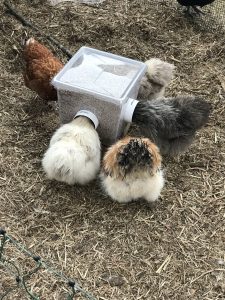
Essential features for their comfort
Creating a comfortable habitat for bantam chickens involves incorporating several essential features into their living space.
First and foremost, proper bedding, such as straw or wood shavings, is vital for warmth and absorption of waste, ensuring a clean and cozy environment.
Adequate ventilation is crucial to maintain air quality and prevent respiratory issues, but it should be balanced with protection from drafts, especially in colder climates.
Perches of various heights cater to their natural roosting instincts and help prevent squabbles over roosting spots.
Nesting boxes should be spacious and private, offering a serene place for laying eggs.
Access to an outdoor run allows bantams to indulge in natural behaviors like foraging, dust bathing, and sunbathing, which are critical for their mental and physical well-being.
Providing these features, along with fresh water and a balanced diet, ensures a comfortable and stress-free environment, essential for the health and happiness of bantam chickens.
6. Feeding Bantam Chickens
Nutritional needs
Nutritional needs are paramount for the health and well-being of bantam chickens. These miniature poultry require a balanced diet that includes proteins, vitamins, minerals, and carbohydrates. A quality commercial poultry feed designed for bantams or small breeds is ideal, as it’s formulated to meet their specific dietary requirements. Supplementing their diet with grains, vegetables, and occasional treats like mealworms or fruits adds variety and additional nutrients. It’s important to provide calcium sources, such as crushed oyster shells, for strong eggshells and bone health. Fresh, clean water should be available at all times. Moderation is key, as overfeeding can lead to health issues, especially in smaller breeds like bantams.
Tips for feeding schedules and diet types
Establishing an effective feeding schedule and understanding the right diet types are essential for the health of bantam chickens. Generally, bantams should be fed a well-balanced poultry feed twice a day — in the morning and late afternoon. This feed should be specifically formulated for smaller breeds or bantams, ensuring it meets their nutritional needs without overfeeding. Free access to grit is important to aid in digestion, especially if they consume scratch grains or have access to forage. Supplementing their diet with fresh vegetables and fruits provides additional nutrients and variety, but should be given in moderation to prevent digestive issues. Occasional treats like mealworms or small amounts of cooked meat can provide extra protein, particularly beneficial during molting or colder months. Clean, fresh water must be available at all times. Avoid overfeeding to prevent obesity, a common issue in smaller breeds. Adhering to this feeding regimen ensures your bantams receive the necessary nutrients while maintaining their optimal health.
7. Health and Care
Common health issues
Bantam chickens, like all poultry, are susceptible to certain health issues, some of which are more prevalent in their miniature size. One common concern is respiratory infections, which can be caused by bacteria, viruses, or fungi, and are often exacerbated by poor ventilation. Parasitic infestations, such as mites and lice, are another frequent problem, particularly if the coop is not regularly cleaned. Bantams are also prone to obesity due to their small size, making proper diet management crucial. Egg binding, where an egg gets stuck in the hen’s reproductive tract, can occur, especially in smaller breeds. Marek’s disease, a viral infection affecting the nerves, and avian influenza are serious health risks that can be mitigated with good biosecurity measures. Routine health checks, maintaining a clean environment, providing a balanced diet, and ensuring vaccinations are up to date are essential in preventing and identifying these issues early, ensuring the well-being of your bantam flock.
Regular care and maintenance tips
Regular care and maintenance are key to keeping bantam chickens healthy and happy. Daily, ensure they have fresh water and a balanced diet; clean and refill feeders and waterers to maintain hygiene. Weekly, check each chicken for signs of illness or parasites, focusing on their feathers, eyes, and behavior. Clean the coop thoroughly, removing soiled bedding and replacing it with fresh material to prevent disease. Monthly, inspect and clean perches, nesting boxes, and the coop’s structure for damage or pests. Seasonally, adapt their living environment to changing weather conditions, providing extra insulation or ventilation as needed. Consistent care and attention to these aspects will ensure a thriving, contented bantam flock.
8. Breeding Bantam Chickens

Basics of breeding
Breeding bantam chickens requires understanding their specific needs and behaviors. First, select healthy birds with desirable traits; consider temperament, physical characteristics, and breed standards. Ensure you have a balanced ratio of hens to roosters; typically, one rooster for every 4-6 hens is sufficient. Before breeding, provide a nutritious diet to boost health and fertility. Create a comfortable and stress-free environment, as bantams are sensitive to disturbances, which can affect breeding success. Provide separate nesting areas for hens to lay eggs, ensuring they are private and secure. Once eggs are laid, decide whether to use a broody hen or an incubator for hatching. If using a broody hen, ensure she’s healthy and committed to sitting on the eggs. For incubation, maintain the correct temperature and humidity levels and turn the eggs regularly. After hatching, provide a warm, safe brooder for the chicks and feed them a starter diet. Understanding these basics helps in successfully breeding healthy, vibrant bantam chickens.
Challenges and Rewards
Breeding bantam chickens presents a unique set of challenges and rewards that can be both demanding and gratifying. One of the main challenges is managing the delicate health of these small birds, as they can be more susceptible to diseases and require vigilant care. Ensuring the genetic health and diversity of the flock can also be complex, necessitating careful selection and breeding practices. Additionally, the process of incubation and raising chicks demands time, patience, and a controlled environment to ensure successful hatching and growth.
However, the rewards of breeding bantam chickens are immense. Observing the miracle of life from egg to chick is an incredibly fulfilling experience. There’s also the satisfaction of contributing to the preservation and propagation of diverse bantam breeds. Successful breeding results in the joy of nurturing healthy, vibrant chicks and watching them grow into mature chickens. For enthusiasts, the process offers endless learning opportunities and the pleasure of deepening their connection with these charming creatures. Breeding bantams, with its ups and downs, ultimately brings a sense of accomplishment and a deeper appreciation for the nuances of poultry keeping.
9. Social Behaviors and Interaction
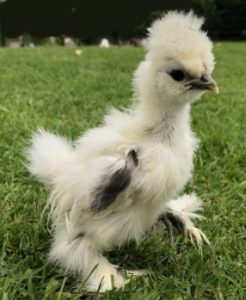
Understanding their social dynamics
Understanding the social dynamics of bantam chickens is key to ensuring their well-being and harmony within the flock. Bantams, like all chickens, have a hierarchical social structure known as the “pecking order.” This hierarchy determines their access to food, nesting sites, and perching spots. Observing their interactions can reveal this order, as dominant birds often eat first and choose the highest perching spots. It’s important to note that introducing new birds can disrupt this order, leading to squabbles as they re-establish hierarchy. Bantams are generally social and enjoy the company of their flock; however, overcrowding can lead to stress and aggression. Providing ample space, multiple feeding and watering stations, and enough roosting spots can minimize conflicts. Understanding and respecting their social dynamics helps in creating a peaceful environment. Observing their interactions and responding to their needs fosters a harmonious living situation, where each bantam can thrive and exhibit natural behaviours.
Tips for socializing your bantams
Socializing bantam chickens effectively enhances their quality of life and your enjoyment as their keeper. Start by spending time with them daily; gentle handling from a young age helps them become accustomed to human contact. Speak softly to build trust and use treats to encourage interaction. Introduce new bantams to the flock gradually, as sudden changes can disrupt social dynamics. Create a calm environment; avoid loud noises or sudden movements that can startle them. Provide enrichment activities, like perches and foraging areas, to stimulate their natural behaviors and interaction. Consistent, patient, and gentle interaction is key to developing a friendly and sociable bantam flock.
10. Bantam Chickens in Urban Settings
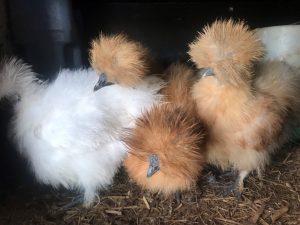
Keeping bantams in the city
Keeping bantam chickens in urban settings has become increasingly popular, offering city dwellers a slice of country life. Bantams are ideal for city living due to their small size, requiring less space than standard chickens. Before starting, it’s essential to check local ordinances, as some cities have specific regulations regarding backyard poultry. Sound management is vital to maintain good relations with neighbors; bantams are generally quieter than larger breeds, making them more suitable for urban areas. Providing a secure, predator-proof coop is crucial in a city environment. Urban bantam keeping allows for fresh eggs, a connection to nature, and the joy of poultry care, even in a small backyard.
Legal considerations and neighbor relations
Navigating legal considerations and maintaining good neighbor relations are crucial when keeping bantam chickens in urban areas. Firstly, check local laws and regulations, as some cities have restrictions or require permits for backyard poultry. Be aware of any limits on the number of chickens allowed and whether roosters are permitted, as they can cause noise issues. To foster positive relationships with neighbors, manage noise by choosing quieter breeds and keeping the coop clean to avoid odors. Share fresh eggs as a friendly gesture to build goodwill. Transparent communication about your poultry-keeping practices can help alleviate concerns and create a harmonious community environment.
11. Engaging with the Bantam Chicken Community
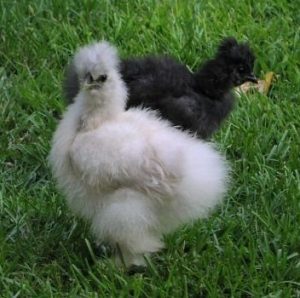
Joining clubs and online forums
Engaging with the bantam chicken community can greatly enhance your poultry-keeping experience. Joining local or online poultry clubs and forums connects you with fellow enthusiasts, offering a platform to share experiences, seek advice, and gain knowledge. Participating in community events, such as poultry shows or fairs, allows you to showcase your birds and learn from others. These interactions provide valuable insights into best practices, breeding tips, and healthcare. Engaging with the community also opens opportunities for collaborations, such as coop tours or breed exchanges. Being part of this supportive network fosters a sense of camaraderie and enriches your journey in bantam chicken keeping.
Benefits of community engagement
Joining clubs and online forums dedicated to bantam chicken keeping is a rewarding way to deepen your understanding and enjoyment of this hobby. These platforms offer a wealth of knowledge from experienced keepers, providing tips on care, breeding, and health management. Engaging in these communities allows for sharing experiences, asking questions, and receiving support. Online forums and social media groups offer the convenience of connecting with enthusiasts globally, while local clubs provide the opportunity for in-person meetings, coop tours, and live events. Such involvement not only broadens your knowledge but also fosters friendships with like-minded individuals, enriching your experience in the world of bantam chicken keeping.
12. Fun Activities with Bantam Chickens
Ideas for interactive activities
Bantam chickens, with their friendly and curious nature, are perfect for engaging in interactive activities that are both fun and stimulating for them. One enjoyable activity is creating a ‘chicken playground’ in your yard with ladders, perches, and swings, encouraging them to exercise and explore. Setting up a dust bath area with sand and ash not only entertains them but also helps in keeping their feathers clean and free from parasites. You can also organize a ‘treasure hunt’ by hiding treats like mealworms, vegetables, or grains around their coop and watching them forage, mimicking their natural behavior. Training them to respond to calls or to perform simple tricks for treats can be an engaging challenge. Another activity is walking your bantams using a specially designed chicken harness, which is both amusing and allows them to safely explore new environments. These interactive activities not only provide enrichment for the chickens but also strengthen the bond between you and your feathered friends.
Bonding with your bantams
Bonding with your bantam chickens creates a rewarding and enriching experience for both you and your feathered pets. Start by spending time daily in their environment, speaking softly and moving slowly to build trust. Offering treats from your hand is a great way to establish a positive association. Gentle handling and petting, especially when done consistently from a young age, helps bantams become comfortable with human interaction. Observing their behaviors and responding to their needs fosters a deeper understanding and connection. This bond not only enhances the well-being of the bantams but also brings immense joy and a sense of companionship to the keeper.
13. Preparing for the Long-Term

Longevity and lifecycle of bantams
Preparing for the long-term care of bantam chickens involves understanding their longevity and lifecycle, which are crucial for their well-being. Bantam chickens typically live between 8 to 12 years, though this can vary depending on breed, care, and environmental factors. The lifecycle begins with the chick stage, lasting about 6 weeks, during which they require a warm, safe environment and specialized feed. They then enter the ‘pullet’ or ‘cockerel’ stage, as they develop into young hens and roosters. Egg-laying generally starts at about 6 months, with productivity peaking in the first few years before gradually declining. As they age, bantams require more attentive care, with adaptations in diet and housing to accommodate their changing needs. Preventive health measures, including regular check-ups and vaccinations, play a crucial role in extending their lifespan. Understanding these stages and preparing to meet their needs at each phase ensures a fulfilling and healthy life for your bantam chickens.
Planning for their future
Planning for the future of your bantam chickens involves thoughtful consideration of their long-term needs. As they age, modifications to their diet and habitat may be necessary. Older bantams might require easier access to food and water, and softer bedding to cushion their joints. Anticipating health issues common in older chickens, such as arthritis or decreased egg production, is key. Regular veterinary check-ups become increasingly important to monitor their well-being. Additionally, consider succession planning if you’re breeding, ensuring the flock’s continuity. Future planning also includes making arrangements for their care during your absence, ensuring their needs are met consistently for a happy, healthy life.
14. Conclusion
Recap of the joys and responsibilities of keeping bantam chickens
Keeping bantam chickens is a journey filled with joys and responsibilities that enrich the lives of their keepers. The joys are manifold: the delight of watching their unique personalities unfold, the satisfaction of caring for these charming birds, and the pleasure of collecting their small, yet nutritious eggs. Bantams, with their varied and beautiful plumage, bring aesthetic pleasure to any garden, while their social behaviors provide endless entertainment. The responsibility side involves ensuring their health and well-being. This includes providing a safe, clean habitat, a balanced diet, and regular health checks. Protecting them from predators and harsh weather is crucial. Being mindful of their social dynamics and managing their breeding responsibly are also key aspects of their care. The balance of joy and duty in keeping bantams fosters a deep sense of accomplishment and connection to nature, making it a profoundly rewarding experience for those willing to invest the time and care.
Encouragement for potential owners
For those considering the rewarding journey of keeping bantam chickens, take heart in knowing that it’s a deeply fulfilling experience. These small birds bring immense joy and vibrancy to your life. Their care, while a responsibility, is manageable and incredibly rewarding. Bantams are perfect for small spaces, making them ideal for urban and suburban settings. Their varied breeds offer something for every enthusiast, from stunning plumages to unique personalities. The fresh eggs, delightful companionship, and connection to nature are unparalleled. Embrace the learning curve and join a community of like-minded individuals. Your commitment to these charming creatures will bring a unique sense of satisfaction and joy.
15. FAQs
How much space do I need to keep bantam chickens?
Bantam chickens require less space than standard chickens due to their small size. Generally, 2-3 square feet per bantam inside the coop and about 8-10 square feet per bird in an outdoor run is sufficient.
What should I feed my bantam chickens?
Bantams should be fed a balanced diet of quality bantam or small breed chicken feed, supplemented with grains, vegetables, and occasional treats like mealworms or fruits. Ensure they have access to clean, fresh water at all times.
Are Bantam Chickens good for families with children?
Yes, bantam chickens are often very suitable for families with children. They are smaller and generally have gentle temperaments, making them easier to handle and care for by younger members of the family.
Can Bantam chickens lay eggs, and how often?
Yes, bantam chickens do lay eggs, although they are smaller than standard chicken eggs. The frequency varies by breed, but many bantam hens lay eggs every 2-3 days.
How long do bantam chickens live?
With proper care, bantam chickens can live for 8-12 years. Their lifespan depends on factors like breed, living conditions, diet, and healthcare. Regular veterinary check-ups and a safe living environment can help ensure a longer, healthier life.













